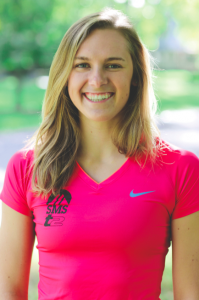Train like a pro: Gaining fitness before winter XC Ski Races
 In cross country skiing, regular exercise allows you to access fitness that makes training feel easier, while race fitness allows you to dig deeper, go harder and ski faster when it matters most. Whether you’re a World Cup racer or keeping your sights set on local community races, the following weekly training plan will help you ski faster and reach your goals.
In cross country skiing, regular exercise allows you to access fitness that makes training feel easier, while race fitness allows you to dig deeper, go harder and ski faster when it matters most. Whether you’re a World Cup racer or keeping your sights set on local community races, the following weekly training plan will help you ski faster and reach your goals.
The first step to racing competitively is showing up. To keep in the know about racing, clinic and expo opportunities around New England, sign up as a member of the New England Nordic Ski Association — at NENSA.net. The $45 membership fee gets you discounted race starts, ranking rights and access to a wide range of races and events. Once you’re a part of the community, it’s time to start training.
- 6 days a week:
Most elite skiers operate on a six day training rotation, with one rest day. The week consists of distance, interval and strength training. Starting in the early winter, anyone who wants to feel strong racing from January to March should do some sort of endurance exercise every day (anywhere from 1-3 hours, depending on your goals and fitness). Skiing would be best, alternating between skate and classic, but if you can’t get on snow, running, spinning or bounding (bouncy running) with poles are good ways to train your cardiovascular system.
- Intervals
At least once a week, usually on Tuesday or Wednesday, racers do interval sessions to prepare for the intensity of weekend racing. If you’re training for a longer race (like the Craftsbury Marathon or Stowe Derby), less intense intervals will help you build your endurance base and make it to the finish line.
An example of these kinds of intervals would be 3-4 by 8-10 minutes, skiing at an intensity of three on scale of 1-5 (1=easy, 5=as hard as possible). Start training six weeks out from your goal race and work from 30 minutes of total interval time up to 60 minutes of interval training, with four-minute breaks between intervals.
For those who are training for shorter, faster races, like 5 or 10Ks, try doing more, shorter intervals. The traditional session for raising cardiovascular capacity is 4x4minutes, but mixing it up with 6x3min, or 4×5 minutes keeps things exciting. As races draw near, the length of your intervals should shorten and you should add harder sets to sharpen and refine your race speed.
- Strength training
There’s a saying in the elite Nordic world that racers like to follow: “keep the hard days hard and the easy days easy.” Rather than skiing as hard as you can on your distance days, take it easy so that you can really hammer your intervals.
Another way to keep your hard day hard, if you have time for two sessions, is to follow your intervals with strength. Strength training in the winter helps fortify specific body zones so that you stay flexible and don’t get injured while racing. A typical strength session should be about 40-60 minutes long with blocks of mobility stretching, leg, arm and core strength (in that order).
Don’t worry about heavy lifting during the winter. Instead, do body weight exercises that target specific strength zones (quads, hamstrings, triceps, lats and abs). Some examples of leg exercises include lunges, body squats, and bounding, while pull-ups, triceps dips and pushups strengthen arm ski muscles. Far and away, a strong core is a skier’s most dangerous weapon. Finish strength sessions with a core circuit of 5-10 exercises that will hit all parts of your stomach and back. We love roll-outs, back ups, med ball throws and windshield wipers.
- Rest
Finally, one of the most important parts of a successful training plan is rest. Always build recovery into your schedule, beyond just your day off.
Take distance skis easy, get plenty of sleep and hydrate well. A pivotal part of recovery is your fuel, so make sure to bring along a carb and protein-heavy snack for the first 15 minutes after your session (when glycogen absorption is at its best) and start carbo-loading two days out from your big race.
To feel rested and ready to go on race day, taper during your last week of training. Skip the intervals and replace them with a few sets of 10-second speeds, where you go as fast as you can.
Following a plan and keeping a routine will help you feel strong, fit and ready when you step up to the line.
Note: Annie Pokorny is a writer from Spokane, Wash., who skis professionally for SMS T2 at Stratton Mountain, Vt.

